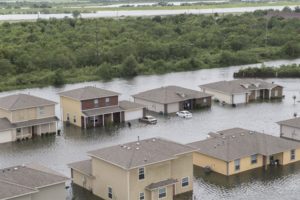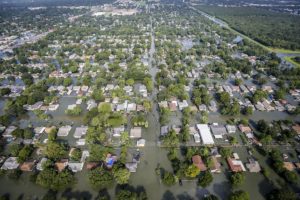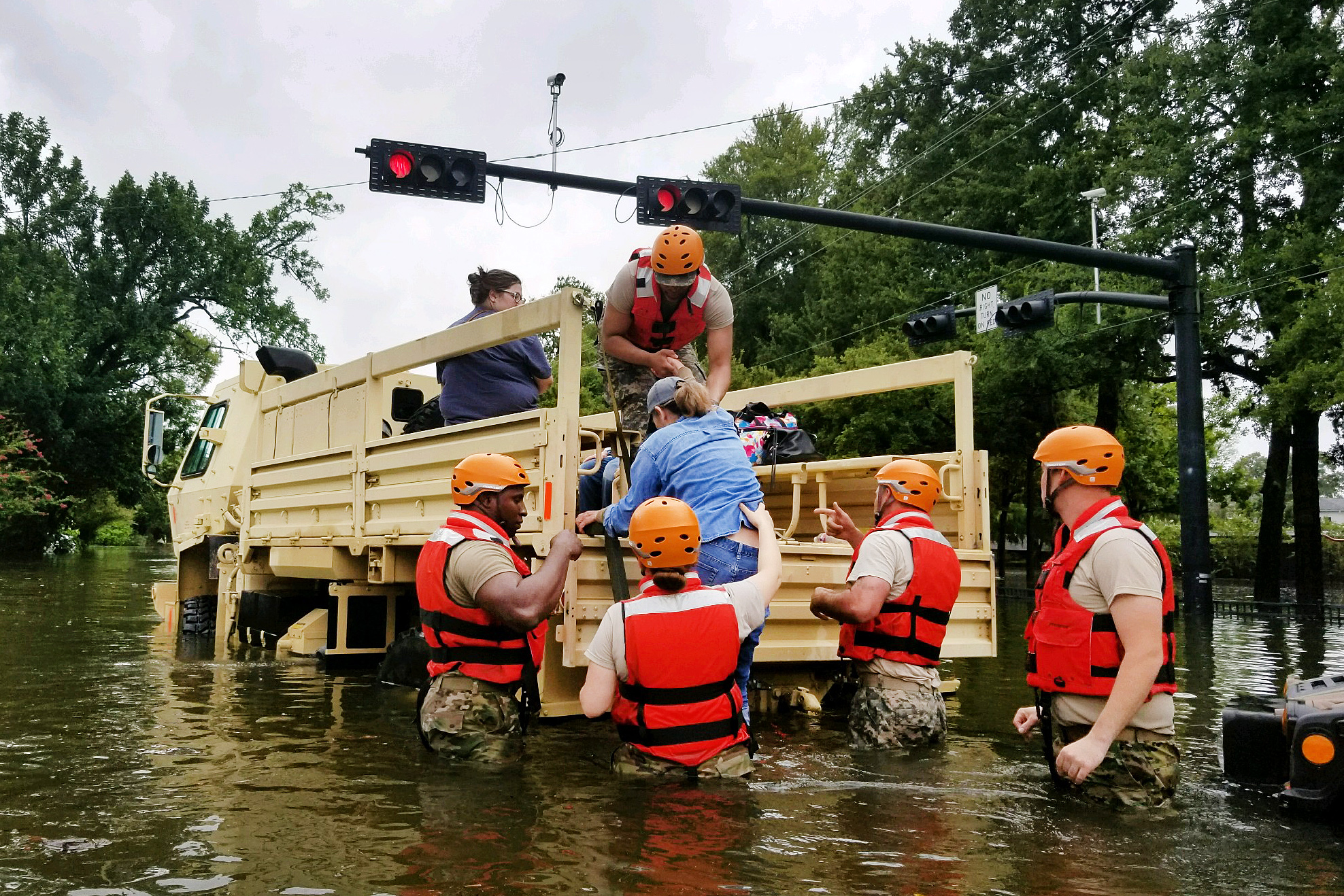By Michael Moore Jr.
Four big screens line the near walls. The two smallest display CNN and NBC News, another depicts security feeds from around campus. But the biggest shows a live weather radar map of the Tampa Bay region.
This is the emergency operations center.
It is filled with phone jacks and conference phones that sit on neatly organized tables. Stockpiles of food and water stay hidden are stored alongside a power generator and a giant, dry-erase campus map that overlooks the room.
This is where hurricane preparedness takes place at USF St. Petersburg: at campus police headquarters in the Fifth Street parking garage. But it isn’t where it starts.
“If you just work in a silo, you’re not going to be very effective,” said David Hendry, chief of campus police.
The university police department takes a leadership role in emergency management.

Hendry sent an email to students, faculty and staff on Friday with a link to the USF hurricane guide. The guide stresses the importance of signing up for MoBull Messenger, part of the USF emergency notification system. It also advises students to maintain a disaster supplies kit, to have a plan and to stay informed.
The email also asked students the following: “As we make our way through the hurricane season, the big question is…are you prepared?”
In recent decades, the Tampa Bay area has had numerous brushes with tropical storms and hurricanes that flooded low-lying areas, downed power lines and trees, and cost some people their lives.
In August 1985, Hurricane Elena stalled in the Gulf of Mexico 80 miles west of Pinellas County, hammering the area with fierce winds, high tides and heavy rain for three days. An estimated 300,000 people in Pinellas were evacuated.
But – miraculously – the last major hurricane to directly strike the Tampa Bay area came in 1921, with a storm that made landfall near Tarpon Springs, inundating low-lying areas of St. Petersburg and destroying two bridges from the mainland to the beaches.
With more than a decade without a major hurricane scare and nearly a century without a direct hit, it’s easy to see how many Tampa Bay residents might have grown complacent, unconcerned and unprepared.
Storms like Harvey remind us just how dangerous they can be. Then there’s Hurricane Irma, a Category 4 storm churning up the Atlantic and threatening the U.S. mainland, which has prompted Gov. Rick Scott to issue a preemptive state of emergency for all 67 counties in Florida. These storms underscore the importance of vigilance and preparation.
Harvey poured an estimated 27 trillion gallons of water on Texas and Louisiana and broke multiple records with more than 50 inches of rain. It may go down as the most destructive natural disaster in U.S. history, with the White House expected to ask Congress for $14.5 billion in relief funding.
Storms like that are reminders of the importance of heeding the words of people like Hendry, who stresses “preparation, planning and communication.”
According to Hendry, all residential students at USFSP are required to come up with an emergency plan that must be provided to campus housing. During new-student orientation, Hendry speaks to parents about the importance of having a coherent and rehearsed plan for these types of situations.
The university also knows when to look for outside help.
“We have a fantastic relationship with city responders,” Hendry said.
In the event of a storm or an equivalent disaster, campus police can coordinate with the St. Petersburg police and fire rescue departments for additional help or resources.
It is this type of communication that is essential in keeping the campus safe, Hendry says.
But campus police aren’t alone in this effort.
Guy Van Asten, the university’s safety and compliance officer, knows a thing or two about being prepared.
He goes to hurricane conferences, speaks with other universities about their experiences in inclement weather and draws on his 21 years in the Coast Guard.
“I just want to assure the campus that these things have been thought about – we’re not just shooting from the hip,” he said.
For Van Asten, communication is the key to everything.
The university starts tracking storms five to seven days out and advises leadership accordingly. According to Van Asten, all decisions on school closures or evacuations are “student-centric” and revolve around what is best for student safety.
System-wide communication is even more important because some of the buildings on campus, like the College of Marine Science, are assigned to the Tampa campus.
Emergency management on the campus is a joint effort and involves an advisory staff to the emergency operations center that has representatives from the facilities and housing staffs as well as the College of Marine Science and others.
Van Asten says that there is a table-top exercise once or twice a year when the advisory panel practices handling such emergency situations and tests the channels of communication.
“It’s all about proactive emergency planning,” Van Asten said. “Planning is second nature for me — it’s natural for me to be inclusive and bring a lot of different hands to the table to help.”
USFSP is recognized as a “storm ready” campus by the National Oceanic and Atmospheric Administration. According to the safety and compliance website, this designation is afforded assigned by the National Weather Service to “better prepare individuals and institutions to identify and remain safe through potential weather hazards.”
This allows the campus to call the National Weather Service directly to get the most up-to-date information and forecasts.

In addition, each university department has its own continuity of operations plan should a storm occur. Some of these need to be fine-tuned, Van Asten said, but he is confident that the university is prepared.
The library, which sits close to Bayboro Harbor, has a plan to move its most valuable items to the uppermost floors. It also utilizes digital storage to help ensure the best protection.
“The thing I always tell students is that they need to understand that we are telling them this because these are lessons learned the hard way,” Van Asten said.
What if? History holds the answer
When the so-called gale of 1848 hit Tampa Bay on Sept. 25, the peninsula now called Pinellas County was still “raw frontier,” with only a smattering of residents, according to historian Raymond Arsenault.
That’s a good thing.
The hurricane had peak winds of 90 to 100 mph and a barometric low of 28.18 inches – neither staggering figures by today’s standards – but the tidal surge was extraordinary, Arsenault writes in his book, St. Petersburg and the Florida Dream: 1888-1950.
As the eye of the hurricane approached the peninsula, “the normally placid waters of the Gulf were pushed into Tampa Bay,” he writes.
“Once the eye had passed, the wind direction suddenly reversed, and within a few hours’ time, a towering wall of water had raced from Egmont Key to the head of Tampa Bay and back again, inundating everything in its path.”
At one point, he writes, “most of the Pinellas Peninsula was under water, as the waves reached the treetops in low-lying areas.”
On the other side of Tampa Bay, all the buildings in a federal fort that sat on the site of today’s Tampa Bay Convention Center were damaged and much of the tiny settlement of Tampa “simply washed away,” writes Arsenault, a USFSP professor of Southern history and chairman of the Department of History and Politics.
The storm was “an awesome reminder of human vulnerability,” he writes, and a warning to “future developers, speculators and technologists of pavement and landfill.”
Header photo courtesy of U.S. Department of Defense



